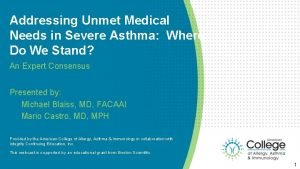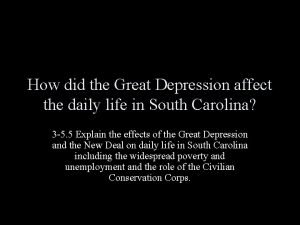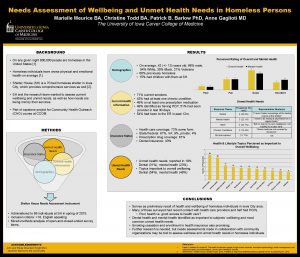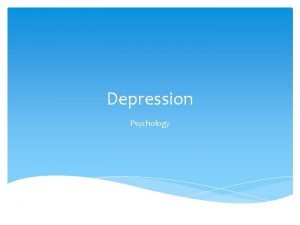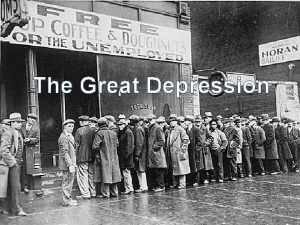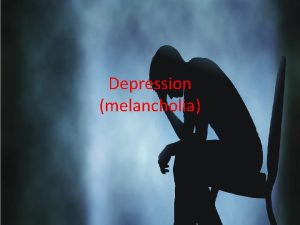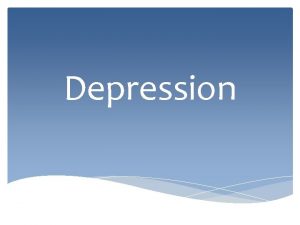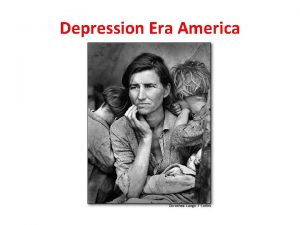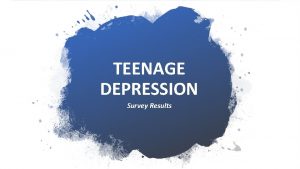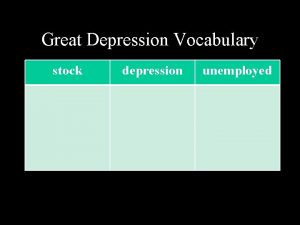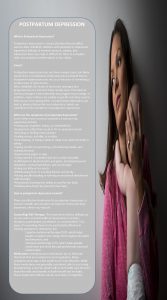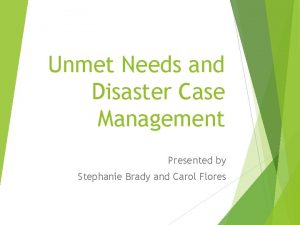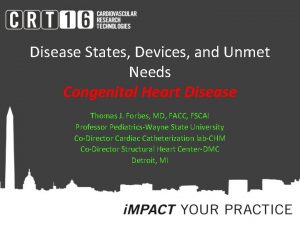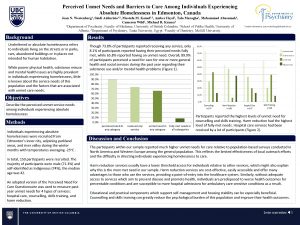Depression and Unmet Needs for Assistance With Daily







































- Slides: 39

Depression and Unmet Needs for Assistance With Daily Activities Among Community-Dwelling Older Adult �� 人:王珊 �� �� : 2018. 7. 31

Journal: 《GERONTOLOGIST》 Impact factor: 4. 078 4. 277 Author: Xiang Xiaoling Northwestern University Feinberg School of Medicine

CONTENTS Introduction Design and Methods Results Discussion

Introduction

Ø An estimated 20– 40% of U. S. older adults needing assistance with daily activities, such as dressing, eating, and shopping for groceries, report unmet needs or receive insuffcient assistance. Ø Up to half of these older adults experience adverse consequences due to unmet needs, such as going without eating, wetting or soiling clothes, making a mistake in taking medications, and having to stay inside. Ø These adverse consequences of unmet needs have a profound impact on older adults’ quality of life and health outcomes.

Ø Preventing adverse consequences of unmet needs has important public health implications for improving the quality of life of older adults and reducing health care costs. Ø Previous studies have consistently linked physical function limitations to adverse consequences of unmet needs for assistance with daily activities. Ø However, little is known regarding the psychosocial risk factors. Ø This study begins to fill this knowledge gap by assessing the impact of depressive symptoms on the adverse consequences of unmet needs

Ø Clinically signifcant depressive symptoms affect 15% of community-living older adults, and the rate is substantially higher among people with physical function limitations Ø Depressive symptoms can be treated successfully with psychotherapy, pharmacological treatment, or a combination. Ø Examining the impact of depressive symptoms may inform practice and policy to reduce the incidence of adverse consequences of unmet needs for assistance with daily activities.

Conceptual Framework Ø Allen et al (2014) constructed a conceptual framework on the pathway to unmet need and its adverse consequences, which was the basis of the framework of this study.

Ø The interpersonal theory of depression posits that the behaviors of individuals with depression such as negative self-statements, passivity, and social withdrawal can erode social support limiting the availability and intensity of informal LTSS from family, friends, and neighbors Ø The socioeconomic disadvantages associated with depression and other mental illness reduce access to formal LTSS by diminishing the ability to purchase longterm care insurance and services

Ø The purpose of this study is to investigate the impact of depressive symptoms on adverse consequences of unmet needs for assistance with activities of daily living (ADL), instrumental activities of daily living (IADL), and mobility

Ø The primary study hypothesis is that elevated depressivesymptoms at prior wave (period t− 1) are associated with more adverse consequences of unmet needs at currentwave (period t)

Design and Methods

Data Ø We analyzed data from round 1 (2011) through round 5 (2015) of the National Health and Aging Trends Study (NHATS). The NHATS is a nationally representative panel study of Medicare benefciaries aged 65 years and older. Persons in older age groups and African Americans were oversampled.

7777 older adults who lived in the community 3400 Medicare benefciaries final sample size was 3361

Measures Ø Needs for Assistance With Daily Activities (last month) ADL(4)、IADL(5)、Mobility(3) Respondents were classifed as having needs for personal assistance if they (a) received assistance with an activity due to health or functioning reasons or (b) had diffculty performing an activity alone Summary indicators of needs for assistance with daily activities were created for ADL, IADL, and mobility domains.

Measures Ø Adverse Consequences of Unmet Needs Respondents who reported a need for assistance with a daily activity were asked if they experienced the adverse consequence associated with that activity due to lack of assistance or diffculty in performing the activity. Summary indicators of the number of adverse consequences

Measures Ø Depression PHQ-2 0 -6 ≥ 3 Ø Covariates • Sociodemographic characteristics: age groups 、sex、race/ethnicity、education • Indicators of illness and impairment severity: dementia status(no dementia、 possible dementia、probable dementia)、 the number of self-reported chronic physical illnesses、 an indicator of past-year hospitalization, and the count of needs for assistance with daily activities

Measures Ø Covariates • Social support (as an indicator of informal LTSS) people in this community “know each other well”, “are willing to help each other”, and “can be trusted” higher scores indicating better social support • Proxies of access to formal LTSS included a dichotomous indicator of long-term care insurance coverage and an indicator of Medicaid coverage (representing Medicare-Medicaid dual eligibility in this study).

Data Analysis Chi-square tests Mixed-effects negative binomial regression models postestimation command margins Stata 12. 0 SE version (Stata. Corp, TX)




Results





Discussion

Ø This study is the first to examine the longitudinal association of depressive symptoms and the number of adverse consequences of unmet needs for assistance with daily activities among Medicare benefciaries. Ø This study extends previous work by showing the vulnerability of older adults with depression in terms of a longer-term risk of adverse events due to inadequate assistance for performing daily activities.

Ø The link between depression and adverse consequences of unmet needs provides an alternative explanation for the high rates of hospitalization and nursing home admissions among older adults with depression Ø This link could also explain why older adults with depressive symptoms report lower quality of life given that the adverse consequences examined are closely related to quality of life

Ø The mechanisms underlying the pathway from depression to adverse consequences of unmet needs are beyond the scope of this study • Depression could increase the risk of adverse consequences due to its association with severity of illness and impairment and LTSS access • Depressive symptoms such as social withdrawal, avoidance, and passivity may discourage help seeking behaviors and inhibit the expression of needs • Depressive symptoms could also reduce the motivation to care for one’s needs and cause self-neglect

Ø Non-black minorities as compared to non-Hispanic whites reported a higher incidence rate of mobility-related adverse consequences. Ø Unexpectedly, college degree was associated with a higher incidence rate of IADL-related adverse consequences. Ø Consistent with Allen et al. ’s framework (2014), number of chronic physical illnesses and needs were associated with higher rates of adverse consequences of unmet needs whereas community social support was associated with lower rates of adverse consequences.

Ø Unexpectedly, probable dementia was associated with a lower rate of IADLrelated adverse consequences. Ø Medicare–Medicaid dual eligibles have higher rates of ADL- and IADL-related adverse consequences.

Implications for Policy and Practice Ø The temporary and longitudinal association of depressive symptoms and adverse consequences of unmet needs call for coordination and integration of mental health services and LTSS, particularly home- and community-based services. Medicaid is the single largest payer for both mental health services and LTSS

Ø Ageism and stigma associated with mental illness, a shortage of health and mental health providers who specialize in geriatrics, concerns over the quality of home- and community-based services, and barriers to implementing evidencebased programs in the real world settings are among the frequently voiced challenges Ø Preventing and treating depression in late life may have added beneft of reducing the needs for LTSS and the incidence of adverse consequences for unmet needs, which, in turn, can improve quality of life among older adults.

Limitations Ø Bradshaw (1972) classifes the operationalization of needs into four categories: normative need , felt need , expressed need and comparative need. The measures used in this study assessed expressed need and felt need. Ø Assessment of depressive symptoms was limited to PHQ-2, which is designed as a screener to be followed by the PHQ-9 to probe depression severity. Ø Study fndings were based on an observational study and causality cannot be inferred.

Ø The lagged association between depressive symptoms at time t− 1 and adverse consequences of unmet needs at time t is likely to be influenced by the temporary association between depression and adverse consequences at time t− 1 continuing to time t. Ø Study sample was restricted to people needing assistance for two consecutive years, representing a population with high needs. Generalizations to older adults with a low level of needs may be problematic. Ø Due to low counts of adverse consequences on some items, we grouped adverse consequences into three needs domains in multivariable analysis and could not examine within-domain variation.

Conclusions Ø Depressive symptoms are positively associated with the number of adverse consequences of unmet needs for assistance with daily activities among older adults. Ø Coordinated and integrated mental health services and LTSS programs are needed to improve access and quality of care for older adults with both mental health and longterm care needs.

Thank You!
 Unmet needs in severe asthma
Unmet needs in severe asthma Unmet financial need
Unmet financial need How did the great depression affect daily life
How did the great depression affect daily life Primary needs and secondary needs
Primary needs and secondary needs Satisfaction
Satisfaction Henry murray theory
Henry murray theory Strategic gender needs and practical gender needs
Strategic gender needs and practical gender needs Wants in esp
Wants in esp Formuö
Formuö Typiska novell drag
Typiska novell drag Nationell inriktning för artificiell intelligens
Nationell inriktning för artificiell intelligens Vad står k.r.å.k.a.n för
Vad står k.r.å.k.a.n för Varför kallas perioden 1918-1939 för mellankrigstiden
Varför kallas perioden 1918-1939 för mellankrigstiden En lathund för arbete med kontinuitetshantering
En lathund för arbete med kontinuitetshantering Kassaregister ideell förening
Kassaregister ideell förening Vilotidsbok
Vilotidsbok A gastrica
A gastrica Densitet vatten
Densitet vatten Datorkunskap för nybörjare
Datorkunskap för nybörjare Boverket ka
Boverket ka Hur skriver man en tes
Hur skriver man en tes Magnetsjukhus
Magnetsjukhus Nyckelkompetenser för livslångt lärande
Nyckelkompetenser för livslångt lärande Påbyggnader för flakfordon
Påbyggnader för flakfordon Vätsketryck formel
Vätsketryck formel Svenskt ramverk för digital samverkan
Svenskt ramverk för digital samverkan Jag har gått inunder stjärnor text
Jag har gått inunder stjärnor text Presentera för publik crossboss
Presentera för publik crossboss Teckenspråk minoritetsspråk argument
Teckenspråk minoritetsspråk argument Plats för toran ark
Plats för toran ark Klassificeringsstruktur för kommunala verksamheter
Klassificeringsstruktur för kommunala verksamheter Mjälthilus
Mjälthilus Bästa kameran för astrofoto
Bästa kameran för astrofoto Centrum för kunskap och säkerhet
Centrum för kunskap och säkerhet Lågenergihus nyproduktion
Lågenergihus nyproduktion Mat för idrottare
Mat för idrottare Verktyg för automatisering av utbetalningar
Verktyg för automatisering av utbetalningar Rutin för avvikelsehantering
Rutin för avvikelsehantering Smärtskolan kunskap för livet
Smärtskolan kunskap för livet Ministerstyre för och nackdelar
Ministerstyre för och nackdelar
